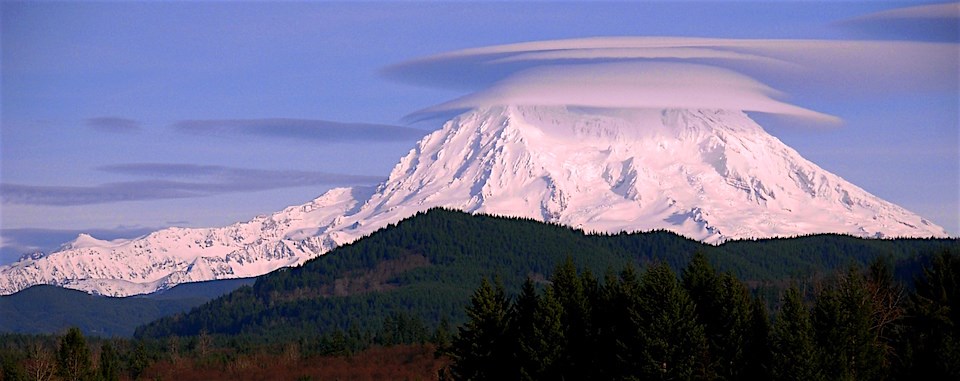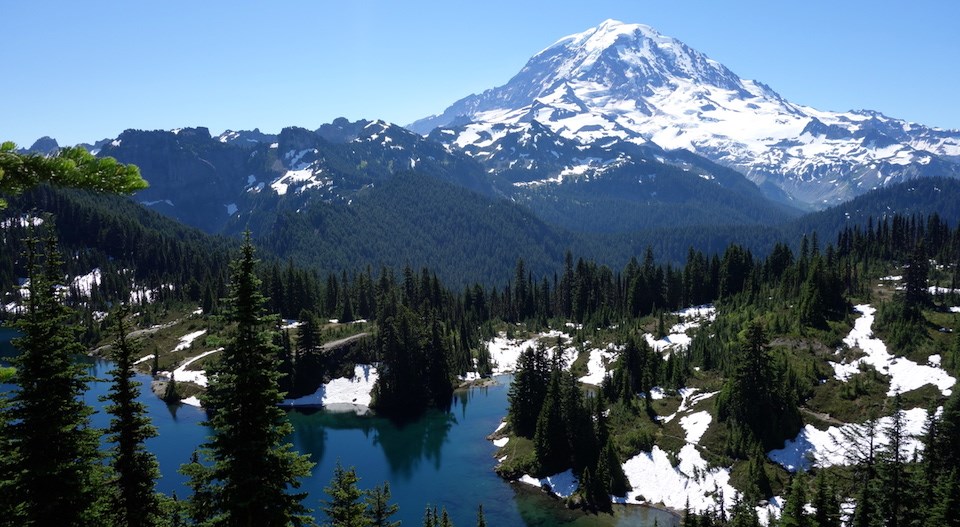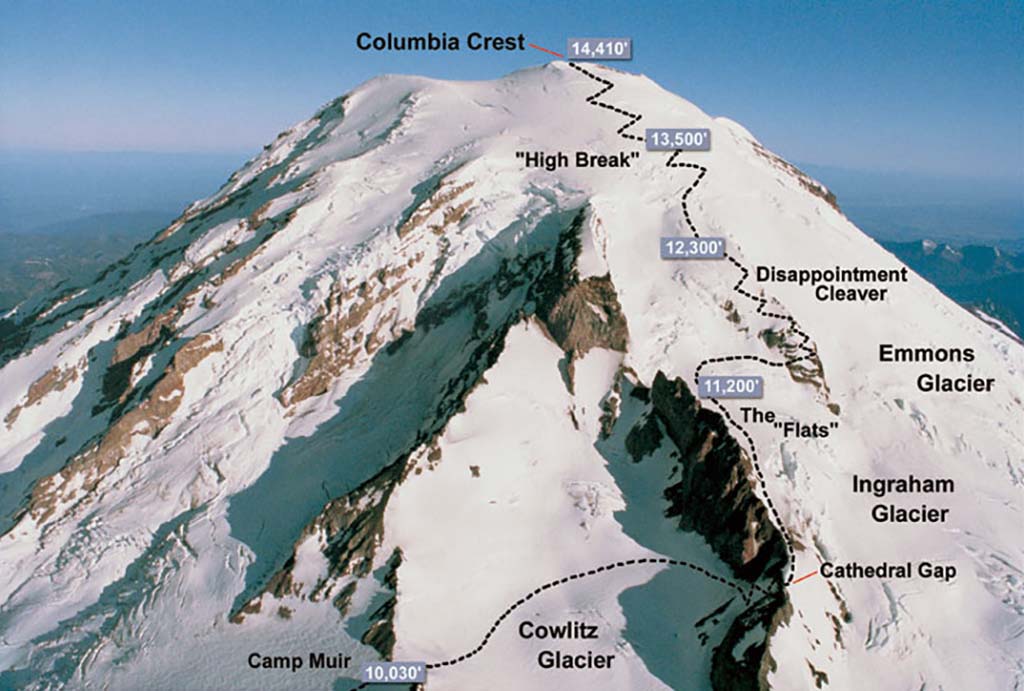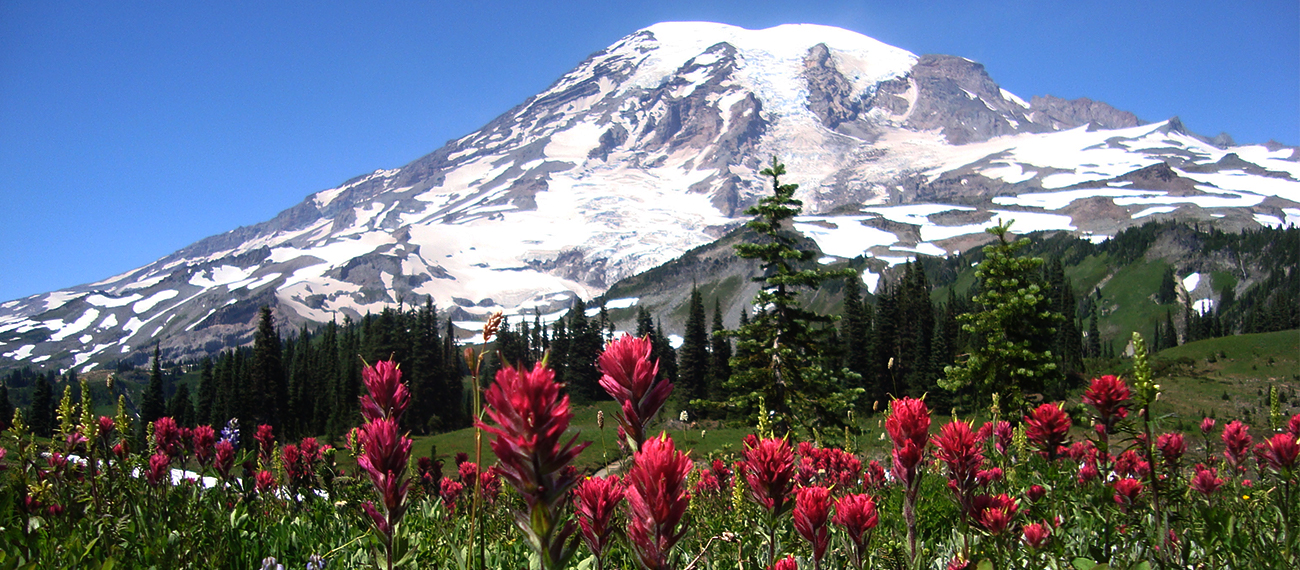
Mount Rainier is the highest peak in the state of Washington at 14,411 feet- almost three miles high. It is located about 59 miles south of Seattle. Almost two million people visit this national park each year.
It is a stratovolcano, meaning that its height is built largely from many layers of hardened ash, lava, and pumice. Mount Rainier last erupted in 1894 and is considered by the USGS to be our nation’s most dangerous volcano due to its reactivity and proximity to dense (and expanding) urban areas. However, it doesn’t take an eruption to cause people to lose their lives on this sometimes deadly mountain.

The National Park Service has compiled a long list of death incidents on the mountain since 1897, starting three years after a major eruption. At least 400 (documented) people have died on Mount Rainier since then. The Oregonian picked out some of the ‘most notable’ incidents in a recent article.
Most of these incidents included avalanches and rockslides that affected hikers and climbers. A few included falls of up to 2,400 feet at the Glacier, where one person miraculously survived. Another incident claimed the life of one person in a group of four backcountry skiers, who fell into a crevasse and ultimately died of suffocation.

None of these incidents claimed as many lives as an avalanche on June 21, 1981. As reported by History Link: 23 novice mountain climbers and 6 professional mountaineer guides attempted the summit of Mount Rainier after a one-day crash course on skills and safety. The group rested at Disappointment Clever while three guides ascended to determine avalanche danger on Emmons Glacier. At this point, 3 fatigued climbers descended with the help of one guide to Camp Muir. The scouting guides decided conditions were too dangerous to continue to the summit. The group headed back down to Ingrahams Flats when just before 6 am, Ingraham Glacier fractured (a 300ft. wide piece) and fell 800 ft. – the snow and ice sweeping all 22 people away.
11 people emerged, but the other 11 were swept into a crevasse and buried beneath the icy debris. The weather changed to white-out conditions within a few hours and the bodies were unable to be recovered. After 2 additional days of recovery attempts, efforts were called off as the conditions were quoted as too dangerous to continue with almost no chance of recovering the bodies. The board of inquiry found after hearing many accounts that the guides did no wrong and practiced safety and sound judgment- the avalanche was a ‘random’ event of glacial movement.

Frozen deep in the crevasse, the bodies became a part of the mountain as glacial ice preserves them. These are the lives the avalanche claimed that day:
David Boulton, age 29
Mark Ernlund, age 29
Ronald A. Farrell, age 29
Gordon Heneage, age 42
David Kidd, age 30
Jonathan Laitone, age 27
Ira Liedman, age 30
Henry Mathews, age 38
Thomas M. O’Brien, age 19
Craig Tippie, age 28
Michael Watts, age 36
As I am traveling nearby Mr Rainier I noticed that the rivers are muddy instead of clear water like previous years (according to other campers). It seems that the excessive melting ice is causing this. I was wondering if the high temperatures these weeks would uncover the bodies and is somebody actively looking for them? (I apologize for my ignorance).
Myself and two friends were scheduled to be with this group. We were driving up from San Francisco when my friend’s VW bus broke down in Oregon and we had to spend almost all of our spare cash to fix it. We did not have enough money remaining to purchase some equipment and pay the guides so we spent our time off with friends in Washington instead. We heard about the calamity on the radio after a day spent rafting on the Wenatchee River. It was probably 30 years before I could tell the story without shaking.